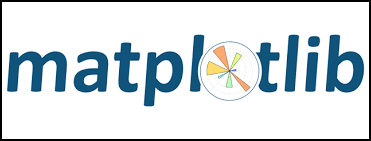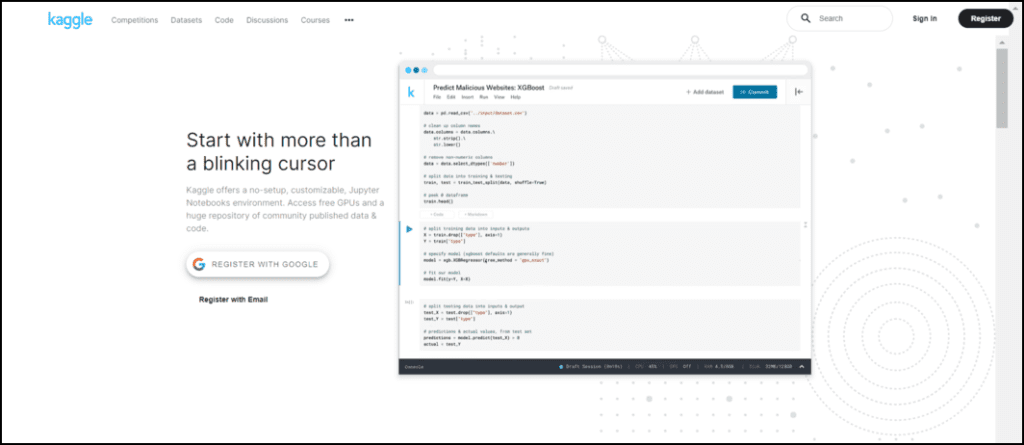
What is Data Science?
Data science is a study that helps us to extract information from a set of structured or unstructured data. It makes use of the study of statistics, mathematics, scientific computation to analyze the data.
Demand for Python in Data Science:
Before we deep dive into the topic let’s firstly discuss why there is a huge demand for Python. Python is one of the most important skills required to excel in the field of Data Science and therefore it is considered the best option for data science. Due to its simplicity, even people not having engineering backgrounds can easily adapt to Python.
Python shares a strong history in the field of Data Science:
- In the year 2016 Python crossed R on Kaggle. Kaggle is a reputed platform for Data Science competitions. Source: Finextra
- In the year 2017, Python crossed R on KDNuggets’s annual poll of data scientists. Source: KDnuggets
- In the year 2018, around 66% of data scientists claimed that they use Python daily which is a huge number and made it the number one language for analytics professionals. Source: KDnuggets
According to the experts, this trend is going to continue with the increase in the development of the Python language. Also, according to a report by Indeed, the average base salary of Data Scientists is around $109,596 per year. In recent years there has been a steep increase in the job opportunities for data scientists in the market.
Why Python is used in Data Science:
Python is a versatile and easy-to-use language and therefore is considered the best language among its peers for Data Science. In terms of scalability, Python has an edge over other programming languages like R. It offers scalability by providing flexibility to data scientists and more than one approach to solve different problems. In terms of speed Python again stands out among its peer languages (like Matlab and Stata).
Some of the important features of the Python language are discussed below:
- The syntax is quite simple to use and therefore anyone can learn Python in lesser time.
- Huge and robust library support to deal with data science applications. A library is a set of modules that are related to each other. It can be used again and again for different programs.
- Strong community support that helps to keep libraries and frameworks up to date. The community size is estimated to be around 10.1 million. Source: developer-tech
- Libraries and frameworks can be downloaded and used free of cost. Python libraries and frameworks are estimated to be around 137000.
- Python is an interpreted programming language. It means that, unlike C or C++, Python source code is firstly converted into byte code which contains low-level instruction, and then it is executed by the Python interpreter.
- Python is cross-platform which means that once the code is written in Python, then it is capable of running in any operating system: Windows, Mac, Linux, etc. Note that Python interpreters are platform-dependent.
- Automation is also possible through Python. Thus, we can automate certain tasks that are time-consuming in our busy daily life.
For example, suppose a class teacher wants to prepare a digital report card of students based on the scores present in an excel sheet. Assuming there can be 100’s of students in a class, making report cards one by one doesn’t seem like a good option to try. To solve this program we can create a Python script that would be able to create report cards of all the students based upon the excel sheet.
How is Python Used for Data Science?
Python provides libraries like NumPy, pandas, SciPy, matplotlib, etc, using which we can do our daily tasks of Data Science easily. Some of these libraries are discussed below:
- Numpy: Numpy is an acronym for Numerical Python. It is a Python library that provides the support of mathematic functions using which programmers can use arrays having larger dimensions. It consists of useful features that facilitate working on arrays and matrices.

- Pandas: Pandas is one of the most popular libraries among Python developers. The main objective of this library is to analyze and manipulate the data with the help of functions bundled in it. A huge amount of structured data can also be handled with this library easily. Pandas support two types of data structure:
- Series – It holds one-dimensional data.
- DataFrame – It holds two-dimensional data.

- SciPy: SciPy is another popular Python library used specifically to carry out Data Science tasks. It is also useful in the field of scientific computation. It provides functionality to solve scientific mathematical problems and computer programming tasks. It consists of sub-modules to carry out the following tasks:
- Signal and image processing
- Optimization
- Integration
- Interpolation

Matplotlib: Matplotlib is a very special Python library. It is used for data visualization. Visualization of data is crucial for any organization. It provides methods using which data can be visualized efficiently. This library is not limited to drawing pie charts, bar charts, histograms but it is also capable of making high-level figures. Customization is another feature of this library as any part of the figure can be customized efficiently.

Matplotlib gives us the facility to zoom a plot and save the plot in Graphics format.
When we enter in an organization as a data science-related profile, generally the organization follows the below structure:
- Fetching data from the company’s database using Python and SQL.
- Inserting the data into a data frame using pandas library so that we can be analyzed later.
- Then analysis and visualization of data begins with the help of Python libraries like Pandas and Matplotlib.
- We go deep into analyzing and exploring the organization’s data and predict the future outcome based on the given data. Scikit-library does the job of preparing a predictive model.
How to learn Python for Data Science:
Anyone can learn Python programming language, all that is required to have is patience and dedication. We recommend you to follow the Python for Data Science, AI & Development course by Joseph Santarcangelo. On Coursera, this course has an average rating of 4.6. This course will help to learn Python for Data Science from the base (from zero level).
Apart from this course, we would like you to acquire the following set of skills along the way:
Step 1: Learning Python basics:
You must have heard the phrase:
“The expert in anything was once a beginner”
Thus, we recommend you start slow and step-by-step. There is a tool called Jupyter Notebook. It is a web-based tool that is used to create and share documents containing live code, visualizations etc. It has an ipykernel using which we can create, share and run Python programs.
Jupyter Notebook:

Jupyter notebook is gaining much popularity these days. Apart from Python we can add R kernel to it and use both languages under the same hood.
Step 2: Be a part of the community:
We suggest you join Python community groups. By joining a community, you will be surrounded by similar-minded people. Sometimes, A Community may also provide you with job opportunities.
You can create an account on Kaggle and join groups to enhance your learning.

Step 3: Work on Projects:
Only learning the Python language doesn’t help you much. You must have to implement the learning you get. It is similar to attending a boring lecture. Therefore, we recommend you follow the “learn and implement” policy.
You can create projects along the way. We know creating big projects is not possible in the beginning. Therefore, we suggest you make mini-projects. Doing mini-projects will improve your grasp of the fundaments.
Step 4: Work on Data Science Libraries for Python:
You should start working with Data Science libraries like Pandas, Numpy, Matplotlib. These libraries will help you to carry out Data Science tasks efficiently.
Numpy and Pandas are great libraries to deal with data. Matplotlib on the other hand will help you to visualize the data.
Step 5: Show your work to others:
You should demonstrate your learning in the public. It can either come in the form of a portfolio or anything. Also, you can create an account on Linkedin. Here, you can build a network and showcase your work to others.
Applications of Data Science:
- Healthcare sector: The healthcare sector has been benefited because of the development in the field of Data Science over the past few years. Medical Image Analysis Procedures like artery stenosis are now possible through libraries and frameworks like MapReduce.

- Internet Search: Most of the search engines like Google, Yahoo, Bing, etc use data science algorithms internally to produce the best result within a fraction of seconds. According to the reports Google deals with more than 20 petabytes of data on a daily basis. So without data science, we cannot even imagine search engines what they are today.

Conclusion
Hence, Python is the foundation for any data scientist. If you want to pursue a career in the field of data science then you should definitely consider Python as the primary language because of its simplicity and large support of libraries.
